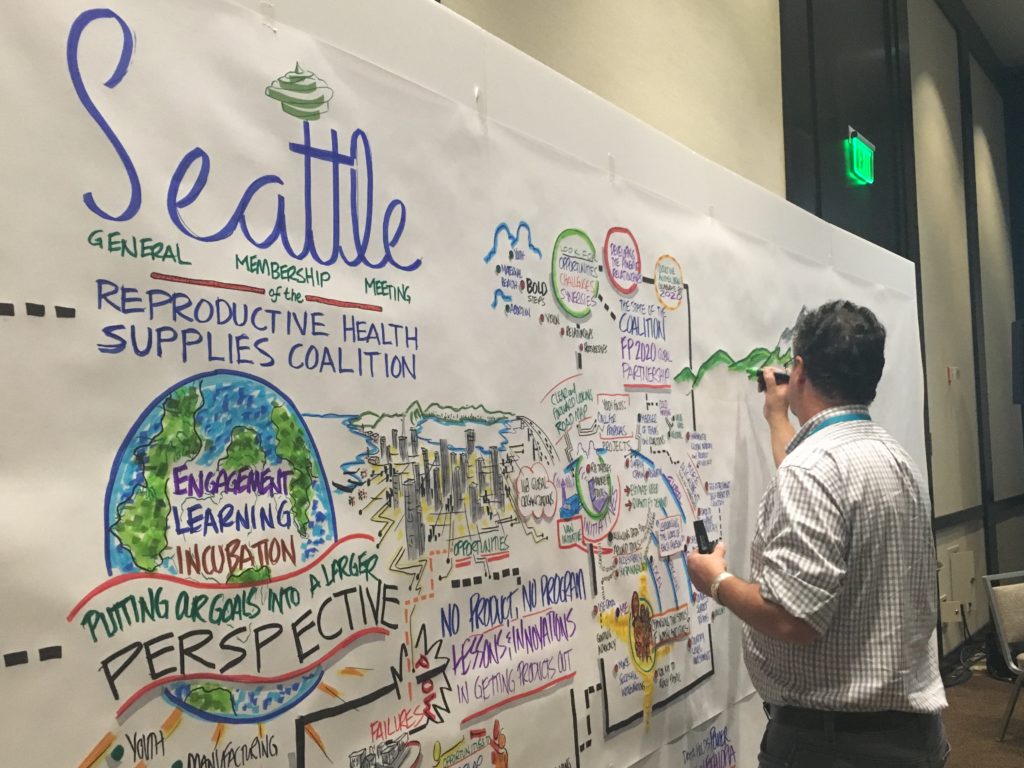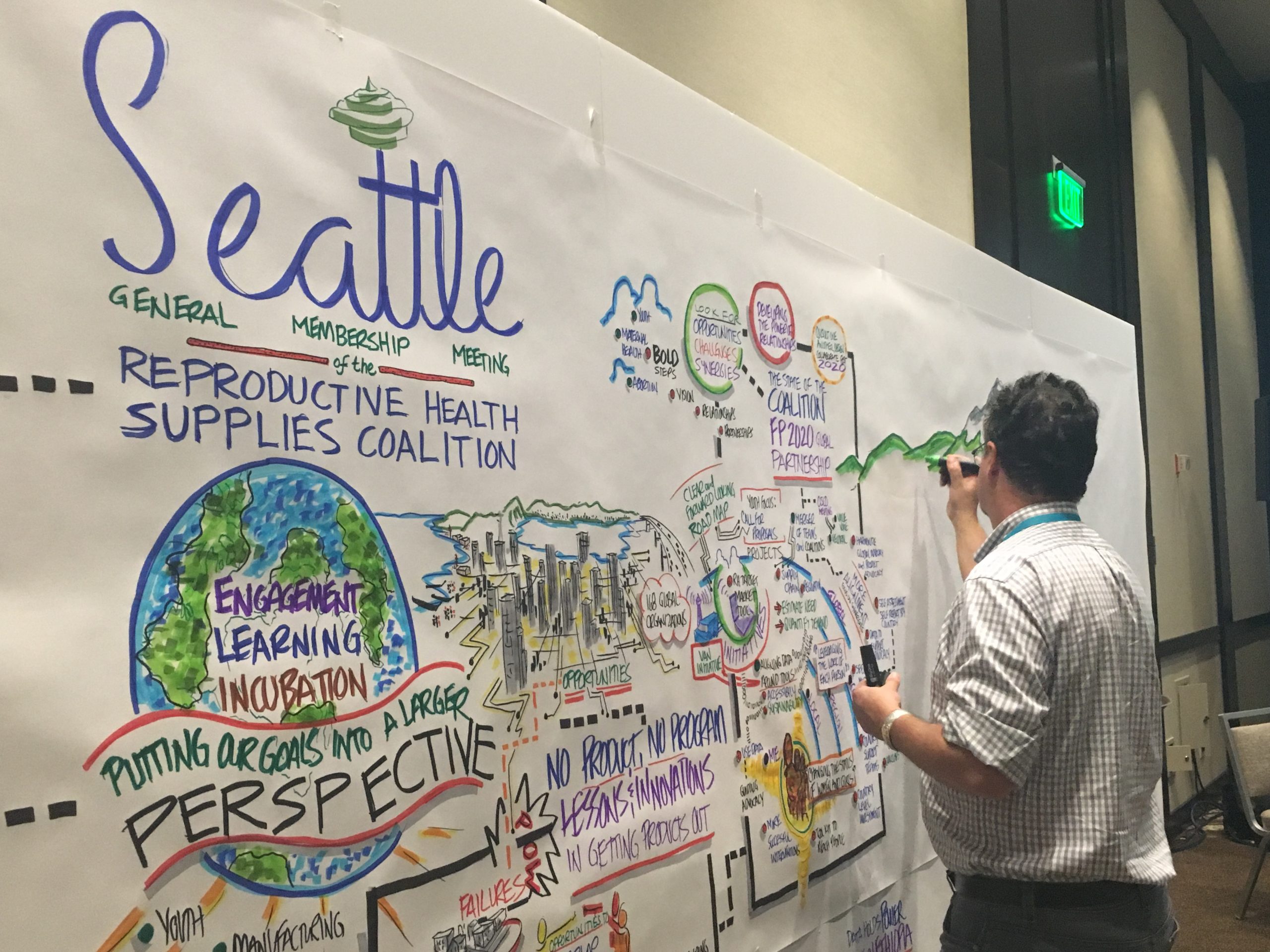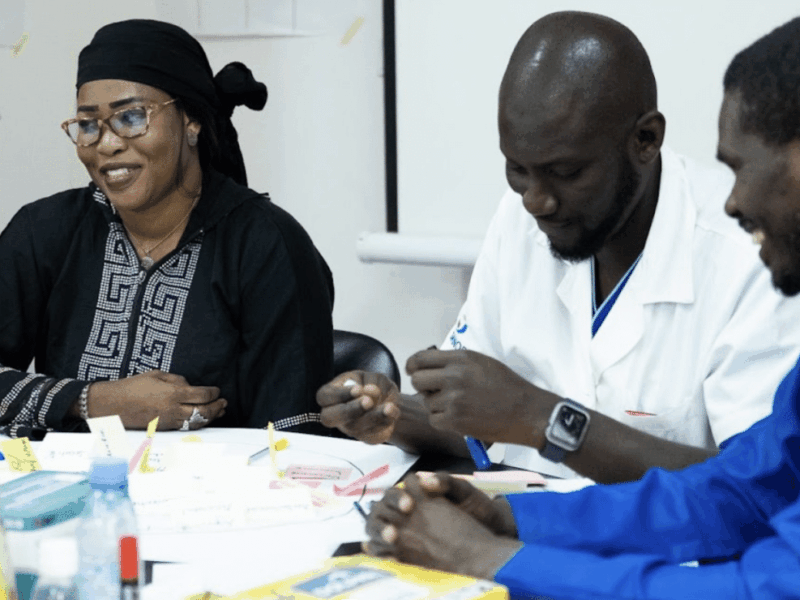Last week, along with several other colleagues from the Johns Hopkins Center for Communication Programs (CCP), I attended the 17th General Membership Meeting of the Reproductive Health Supplies Coalition (RHSC) in Seattle, Washington. In addition to collecting interviews for the Family Planning Voices initiative (www.fpvoices.org), which we co-lead with Family Planning 2020 (FP2020), we also had the opportunity to think about how communication fits within the complex world of supply chain management.
A major theme of the week was the concept of “The Last Mile”—that is, making sure that products make their way to the point-of-distribution. It is not enough for a product to reach the shelf, but women and men who need these products need to access them. For some, this means finding a nearby urban health clinic; others walk hours to a rural health post; still others wait at home for community health workers to visit their village. In thinking about this concept, and the many challenges involved in the supply chain, I immediately saw the role of social and behavior change communication (SBCC) and knowledge management (KM).
Even though this group is called the Reproductive Health Supplies Coalition, the membership clearly recognizes that this work is not just about the supplies, but about people, too—the people who provide the commodities, use the supplies, counsel their clients about the supplies, and provide education so that women, girls (and men too) can make informed choices about these supplies. Really understanding supply chain issues, therefore, can help us in our SBCC and KM work.

A graphic facilitator takes notes during the Reproductive Health Supplies Coalition Meeting in Seattle, Washington.
But what does this look like in practice? Here are some concrete ways that SBCC and KM can help address some common problems mentioned during the RHSC meeting:
- Generating demand and addressing provider bias—for example, designing job aids for providers to use to counsel young people on the use of long-acting reversible contraceptives (LARCs)
- Developing and training on job aids—for example, the pregnancy checklist, which is used to prevent clients from being turned away from the family planning clinic if they are not menstruating
- Researching and addressing barriers to achieving a broad mix of contraceptive methods within a country—for example, cultural reasons why providers do not offer IUDs, or why women may be declining them
- Identifying and addressing gender issues that may help with contraceptive uptake
- Packaging data and information for use in policy—for example, sharing information that supports provision of IUDs and implants by mid-level providers
- Supporting communities of practice (CoPs) to encourage knowledge sharing among different sectors (public/private, etc.) to ensure smooth coordination and distribution of supplies
Everett Rogers, in his groundbreaking Diffusion of Innovations theory, described technology as having two components: 1) hardware—the tool or material object of the technology; and 2) software—the information base for the tool. This theory was channeled by IntraHealth’s Roy Jacobstein in a discussion of pregnancy test distribution to providers. (The use of simple, inexpensive pregnancy tests can increase access to same-day provision of family planning services.) Jacobstein said, “Every technology has a hardware and a software. The software here is the knowledge and behavior change to go along with the pregnancy tests.
This resonated with me, and I began applying SBCC and KM lenses to look for new ways to address current issues in the reproductive health supply chain. I invite you to do the same. As health communicators, it is important that we work to support behavior change and knowledge during all stages of the supply chain so that contraception can reach clients at “The Last Mile.” Only then will we be able to meet the FP2020 goal of reaching an additional 120 million users of modern contraceptive methods by 2020.
This post was written by Sarah V. Harlan, Learning Director, Knowledge for Health (K4Health) Project. K4Health is the flagship knowledge management project of the U.S. Agency for International Development (USAID) Bureau for Global Health, Office of Population and Reproductive Health. K4Health is led by the Johns Hopkins Center for Communication Programs (CCP) in partnership with FHI 360, IntraHealth International, and Management Sciences for Health (MSH).
The RHSC is a collaborative organization that includes 390 member organizations, all working together to “ensure access to a full range of affordable, quality reproductive health supplies in low- and middle-income countries” (RHSC website). An ambitious mandate, this effort obviously requires coordination among different sectors –governments, civil society, private companies, etc. This meeting, therefore, was a diverse crowd representing these groups, and many more – including the first ever RHSC youth delegation.





